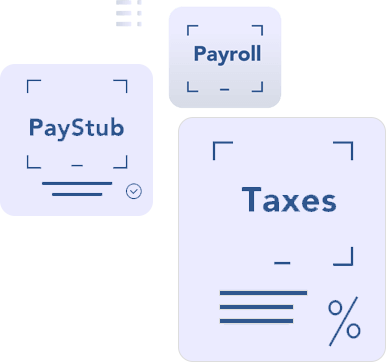Time off policies and its impacts in Payroll
- Updated on Sep 12, 2020 - 12:00 PM by 123PayStubs TeamEmployers in the United States who have regular employees working for their company provide time off under different categories such as paid, sick, and vacation pay. The employers can assign employees to time off policies followed in the company.
Read on to learn about the time-off policies and its impacts on payroll. Here are the topics covered in this article.

What is a time-off policy?
A time-off policy is used to pool time off hours for sick days, vacation days, and personal days, allowing employees to use when they need it. The number of hours for an employee toward a policy is decided by their employer. It’ll differ across organizations and there’s no specific law.
Time-off policies are classified into different categories:
- Paid time-off policy
- Paid sick leave policy
- Vacation time-off policy
- Family and Medical Leave Act (FMLA)
- Unpaid time-off policy
Paid time-off policy
Paid time off (PTO) policies with certain hours are provided by an employer to the employee to take off when needed, and it can be used for sick, vacation, and personal days. PTO hours for an employee can be given completely for a year or chosen to accrue based on the time employee worked.
Employers can opt to roll over the unused hours to the next year, partially or completely, or set to start accruing hours afresh.
Note: States such as California requires employers to pay the unused hours of PTO policy during the time of employee’s separation from the company.
Paid sick leave policy
Some states and jurisdictions require employers to provide sick leaves to employees. Each state has different requirements and rules for organizations operating in the respective state. States that have separate paid sick leave laws are as follows:
- Arizona
- California state and its jurisdictions such as Berkeley, Emeryville, Long Beach, Los Angeles, Oakland, San Diego, San Francisco, and Santa Monica
- Connecticut
- Washington, D.C.
- Chicago and Cook County, Illinois
- Maine (Effective January 1, 2021)
- Maryland state and its jurisdictions such as Montgomery County
- Massachusetts
- Michigan
- Jurisdictions in Minnesota such as Duluth, Minneapolis, and St. Paul
- Nevada
- New Jersey
- Jurisdictions in New York such as Westchester County and New York City
- Oregon
- Jurisdictions in Pennsylvania such as Philadelphia and Pittsburgh
- Rhode Island
- Jurisdictions in Texas such as Dallas, Austin, and San Antonio
- Vermont
- Washington and its jurisdictions as such as SeaTac Airport, Seattle, and Tacoma
With a paid sick leave policy, employees can only take time off for illness and other health-related purposes.
It’s not needed to provide a paid sick policy to employees if you’re already offering a paid time off policy to employees if the PTO policy
- allows employees to use the same amount of leave under the same conditions as required by the paid sick leave laws of the state;
- satisfies the accrual and carryover requirements of the state.
Also, employers don’t have to pay for the unused sick leave hours when the employee leaves the organization.
Vacation time-off policy
No federal laws or FLSA mandates employers to provide vacation pay to employees. Also, if your company has a separate paid time-off policy, it’s not required to have a vacation policy as the PTO policy itself offers leaves for employees toward sick and personal days including vacation days.
The employer can decide how the number of vacation hours for an employee based on industry standards and employee requirements. Also, the employer decides the accrual method and whether the unused hours should be rolled over to the next year or not.
Family and Medical Leave Act
The Family and Medical Leave Act (FMLA) provides covered employees with up to 12 weeks of unpaid, job-protected leave per year for specified family and medical reasons. It also requires that the employees’ group health benefits be maintained during the leave period.
Employees eligible to FMLA are entitled to:
12 workweeks of leave in a year for the following reasons:
- the birth of a child and to care for the newborn child within one year of birth;
- the placement with the employee of a child for adoption or foster care and to care for the newly placed child within one year of placement;
- to care for the spouse, child, or parent who has a serious health condition;
- a serious health condition that causes temporary disability in performing the essential functions of their job;
- any qualifying exigency arising out of the fact that the spouse, son, daughter, or parent is a covered military member on “covered active duty;”
26 workweeks of leave during a year to care for a covered servicemember with a serious injury or illness if the employee is the servicemember’s spouse, son, daughter, parent, or next of kin (military caregiver leave).
Unpaid time-off policy
If your employees use up all of their PTO hours and need to take off, you may provide unpaid time off. That is, the employee can take time off from work without pay. To allow employees to take unpaid time off, employers must create an unpaid time off policy for their business. This policy can be used for sick, vacation, or personal days.
To set up an unpaid time off policy, decide the number of unpaid hours employees can take in a year and which employees are allowed to take unpaid time off.
Time off policies for COVID-19
In response to the COVID-19 pandemic, the Families First Coronavirus Response Act (FFCRA) was enacted. The FFCRA requires employers with fewer than 500 employees must provide emergency paid sick and family medical leave. The act is inclusive of two time off policies:
- Emergency Paid Sick Leave
- Expanded Family and Medical Leave
Emergency Paid Sick Leave
If an employee is unable to report to work because
- the employee is quarantined or experiencing COVID-19 symptoms, employers must provide 2 weeks (up to 80 hours) of paid leave (regular rate or the applicable minimum wage rate, whichever is higher, up to $511 per day and $5,110 in aggregate)
- the employee is taking care of their child or family member affected by COVID-19 or experiencing symptoms and seeking medical diagnosis, employers must provide 2 weeks (up to 80 hours) of paid leave at 2/3rd of their regular pay or applicable minimum wage, whichever is higher, up to $200 per day and $2,000 in the aggregate (over a 2-week period).
Expanded Family and Medical Leave Act
If an employee is unable to report to work because their child’s daycare has been closed due to the COVID-19 pandemic and they have to take care of their child, employers must provide 12 weeks (the first 10 days are unpaid and the remaining 10 weeks are paid) of leave at the 2/3rd of their regular pay or the applicable minimum wage, whichever is higher, up to $200 per day and $12,000 in the aggregate (over a 12-week period).
Reporting Time Off Hours in Employee Pay Stubs
States like California require employers to report the available time off hours in their employee pay stubs. With 123PayStubs, you can add applicable time-off policies and the hours used, accrued, and available for this pay period to your employee pay stubs.
Click here to know how to add time off policies to the pay stubs.





